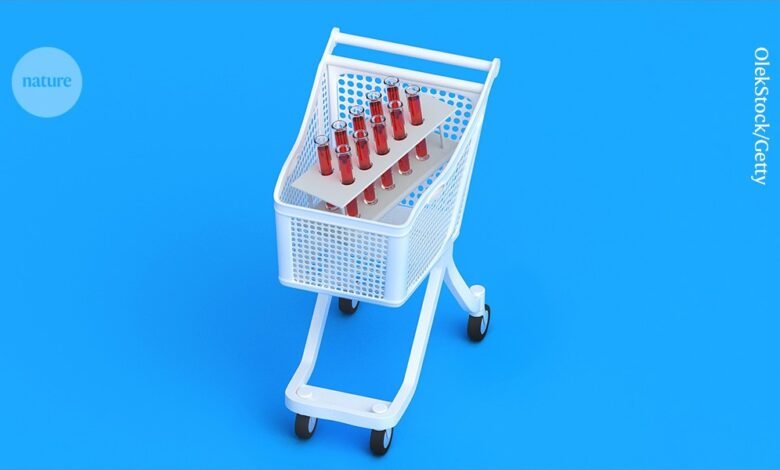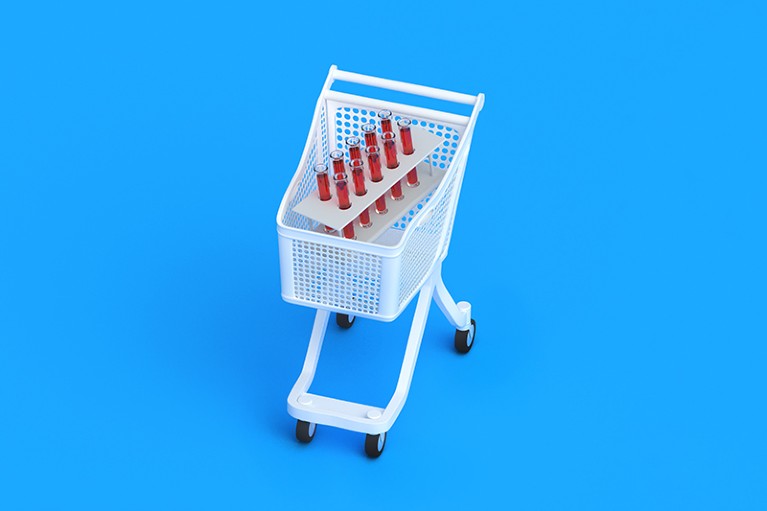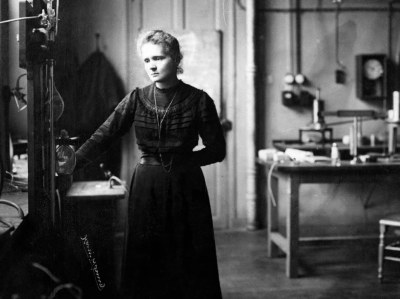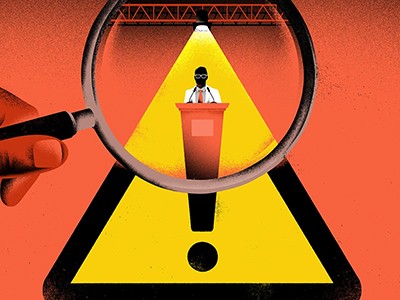how cash-strapped research teams are getting creative


Credit: OlekStock/Getty
In 2022, Carolina Quezada was on the hunt for a new piece of equipment. To synthesize the metallic nanoparticles she works with, she needed a dry bath incubator to heat the starting materials. She checked online, but held off on making a purchase because she was worried about the cost. In the end, she bought the equipment the following year. “By then, it was already more than 30% more expensive,” says Quezada, a biotechnologist at the Catholic University of the Most Immaculate Conception in Concepción, Chile. “That rise in cost has made me more cautious on what I spend money on.”
The rapid increase in the price of scientific equipment has been noticed by many, including Daniel Garcia-Gonzalez, a specialist in biomechanics at the Charles III University of Madrid. Over the past two years, he says, the cost of the various chemicals he uses for his work with magnetic materials has increased by 13%, whereas the price of plastic weighing pans has increased by 67%.
In Singapore, the prices of most research-related consumables and equipment increased by 10–20% from 2020 to 2023, says Nisanthra, a laboratory manager at Life Science Incubator, an organization in the city-state that offers co-working lab spaces. Parafilm and helium became especially expensive, she adds, rising in price by 50% owing to a global shortage.
This trend has been observed in labs across the world and has been blamed on several factors. These include inflation due to energy shortages triggered by war in Ukraine; global scarcities of raw materials, such as rare-earth metals needed for semiconductors in research equipment; and a steady increase in research activities. As a result, lab managers must cope with ever-steeper price hikes for many crucial materials.
According to Enora Bennetot Pruvot, a policy director at the European University Association, an organization in Brussels that represents more than 800 higher education institutions across 48 countries, the trend “has significant implications for researchers because many grants are given as a lump sum, and with so much uncertainty in geopolitical relationships and energy prices, financial predictability is difficult”.
So, how can labs deal effectively with these rapid increase in prices?
Buy second-hand or rent
Grant payments rarely rise with inflation or react to other market forces during their funding period, but labs can get creative to maximize returns from their research spending. “Buying refurbished equipment is an economic alternative which reduces waste and conserves resources,” says Lay Ching Chai, a microbiologist at Sunway University in Petaling Jaya, Malaysia. Chai says she’s had to work hard to afford to continue her research, because prices for most equipment imported to Malaysia have increased by between 30 and 50% since 2015. The Malaysian ringgit, meanwhile, has depreciated 32% against the US dollar, while petrol prices and transport fees have risen.
Cash for errors: project offers bounty for spotting mistakes in published papers
Chai’s checklist for buying second-hand equipment includes the robustness of machine functions, a warranty, compatibility with existing software and instruments in labs, and the potential costs of finding replacement parts and new technicians. Although online marketplaces such as eBay and EquipNet offer second-hand research equipment, the condition and reliability of these items can be uncertain, she says. “I encourage researchers to buy from specialized vendors selling reconditioned equipment that come with warranties and technical support.”
According to Insight-Ace Analytic, a market-research consultancy based in Pune, India, the global market for refurbished lab equipment was valued at US$24.3 billion last year and is predicted to reach $37.2 billion in 2031. The most popular products included analytical and clinical equipment and spectroscopy and chromatography instruments. Similar findings were reported by Transparency Market Research, a consultancy also based in Pune.
Tap into the circular economy
Damon Anderson, who writes about lab equipment as a technology editor at LabX Media Group in Midland, Canada, attributes this growth to several factors. These include increased availability of equipment, better inventory management, transparency in usage and maintenance documentation and higher confidence in the quality of the equipment. “Overall, the bar has been raised for listing equipment for sale. At the same time, sustainability initiatives and the circular economy model are being realized by used and refurbished equipment suppliers. These options are a win for not just sellers and buyers, but the environment as well,” says Anderson, who is based in Pittsburgh, Pennsylvania. LabX Media Group is part of LabX, an online store that sells new, used and refurbished lab equipment.
Slow productivity worked for Marie Curie — here’s why you should adopt it, too
Another strategy to save on equipment costs is to buy from less-established companies. Quezada recently bought a spectrophotometer from a small manufacturer for around $1,000 less than the $4,300 quoted by a larger supplier — a substantial amount relative to research grants in Chile. “However, a word of caution is that researchers should perform assessments before buying high-tech and specialized equipment from less reputable manufacturers, to make sure the benefits outweigh the risks,” says Quezada.
Chai adds that rental services for research equipment are increasingly being seen as an alternative for early-career researchers and institutions with limited budgets.
Try a co-working lab
For many new labs and start-up companies that are not well funded, cutting-edge equipment can be too costly to buy. This is where partnerships with co-working lab spaces can help, because membership options include access to specialist equipment. Life Science Incubator in Singapore is one example, providing basic equipment such as microscopes, centrifuges and biosafety cabinets, says Nisanthra. Sharing equipment can bring its own challenges, she adds. “We have had a few incidents when centrifuges are not properly cleaned, which could negatively impact samples of other users. But with the use of CCTV, we are able to investigate and enforce considerate lab practices, and, through discussions, build a responsible culture in the lab.”
Garcia-Gonzalez opted for a sponsor-based model when approached by multinational aerospace company Airbus, which needed help impact-testing the structural robustness of its aircraft. The company sponsored a piece of lab equipment, called a gas gun, to measure high-velocity impact and assess potential structural damage from bird strikes and hail. In return, Garcia-Gonzalez’s department helps to collect data for the company, and the equipment is expected to stay in the lab indefinitely, a partnership that he describes as “a win for both parties”.
How to spot a predatory conference, and what science needs to do about them: a guide
Garcia-Gonzalez adds that a good way to start exploring partnerships with companies is through guest lectures. “My school regularly invites practitioners from the industry to share their experience with our students. This helps professors and company representatives to build collaboration beyond classroom teaching in the long run.”
Buy local
Another option to achieve bang for your buck is to purchase from local suppliers. Quezada regularly buys chemicals, plastic material and glassware from Chilean manufacturers, whose products can be two or three times cheaper than those made by European and North American firms. For instance, she says that a kilogram of zinc sulphate costs $55 from an international brand and only $28 from a brand local to Chile. Quezada’s purchasing decisions are influenced by online customer reviews, colleague recommendations and quality-control documents. Garcia-Gonzalez also often uses local suppliers. “The import of some chemicals requires special border permits, and I prefer to work with local distributors who can assist us with that,” she says.
Garcia-Gonzalez says she makes exceptions to buying from local or lesser-known suppliers when quality control is crucial, as is the case with antibodies, for example. “Antibody quality is an important factor that will strongly influence the experimental outcomes,” she says. “Also, many of our colleagues in the United States and Europe have the luxury of buying antibodies from more reputable suppliers, and these antibodies have become the gold standard in the research field. When researchers in the global south use antibodies from a newer company, we need to do a lot more work to prove that the antibody quality is equivalent.”
Share with care
Quezada shares lab space with one of her colleagues, and says it saves her from buying a lot of equipment. “My colleague has a thermocycler for polymerase chain reaction (PCR), and so I save tens of thousands as I did not need to buy one,” she explains. “If any machine breaks down, you can rely on using your colleague’s equipment while you repair your own.”
Quezada adds that considerate communication is important for equipment-sharing to work equitably. She suggests that principal investigators consider asking a technician to institute a booking system, maintenance protocols and a user agreement so that, when incidents happen, there is a set way of responding.
Finally, the researchers who spoke to Nature highlight the value of a collaborative workplace environment, in which details of good discounts or deals are shared. At Life Science Incubator, for example, such details are disseminated through a group on the messaging platform WhatsApp. A wider network of colleagues at the same institution can help to build business cases for investing in expensive machines, identifying an unmet need before approaching procurement teams, funding agencies or philanthropic foundations, says Garcia-Gonzalez. By banding together, he says, researchers can put pressure on their employers more effectively.
In lower-income countries, thinking of ways to maximize output from grants is often second nature, says Quezada. “A positive aspect of rising research costs is that it may promote collaboration between local researchers and a more sustainable way of doing research; we should all be more aware on how we can save resources.”








